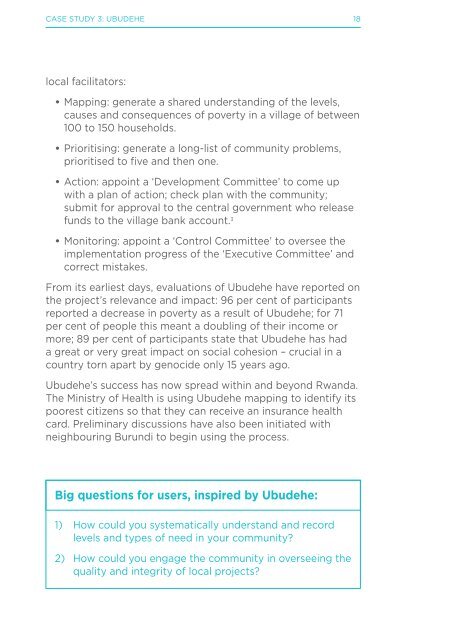Radical Efficiency a Practical Guide - Nesta
Radical Efficiency a Practical Guide - Nesta
Radical Efficiency a Practical Guide - Nesta
- No tags were found...
You also want an ePaper? Increase the reach of your titles
YUMPU automatically turns print PDFs into web optimized ePapers that Google loves.
CASE STUDY 3: UBUDEHE 18local facilitators:• Mapping: generate a shared understanding of the levels,causes and consequences of poverty in a village of between100 to 150 households.• Prioritising: generate a long-list of community problems,prioritised to five and then one.• Action: appoint a ‘Development Committee’ to come upwith a plan of action; check plan with the community;submit for approval to the central government who releasefunds to the village bank account. 3• Monitoring: appoint a ‘Control Committee’ to oversee theimplementation progress of the ‘Executive Committee’ andcorrect mistakes.From its earliest days, evaluations of Ubudehe have reported onthe project’s relevance and impact: 96 per cent of participantsreported a decrease in poverty as a result of Ubudehe; for 71per cent of people this meant a doubling of their income ormore; 89 per cent of participants state that Ubudehe has hada great or very great impact on social cohesion – crucial in acountry torn apart by genocide only 15 years ago.Ubudehe’s success has now spread within and beyond Rwanda.The Ministry of Health is using Ubudehe mapping to identify itspoorest citizens so that they can receive an insurance healthcard. Preliminary discussions have also been initiated withneighbouring Burundi to begin using the process.Big questions for users, inspired by Ubudehe:1) How could you systematically understand and recordlevels and types of need in your community?2) How could you engage the community in overseeing thequality and integrity of local projects?
















